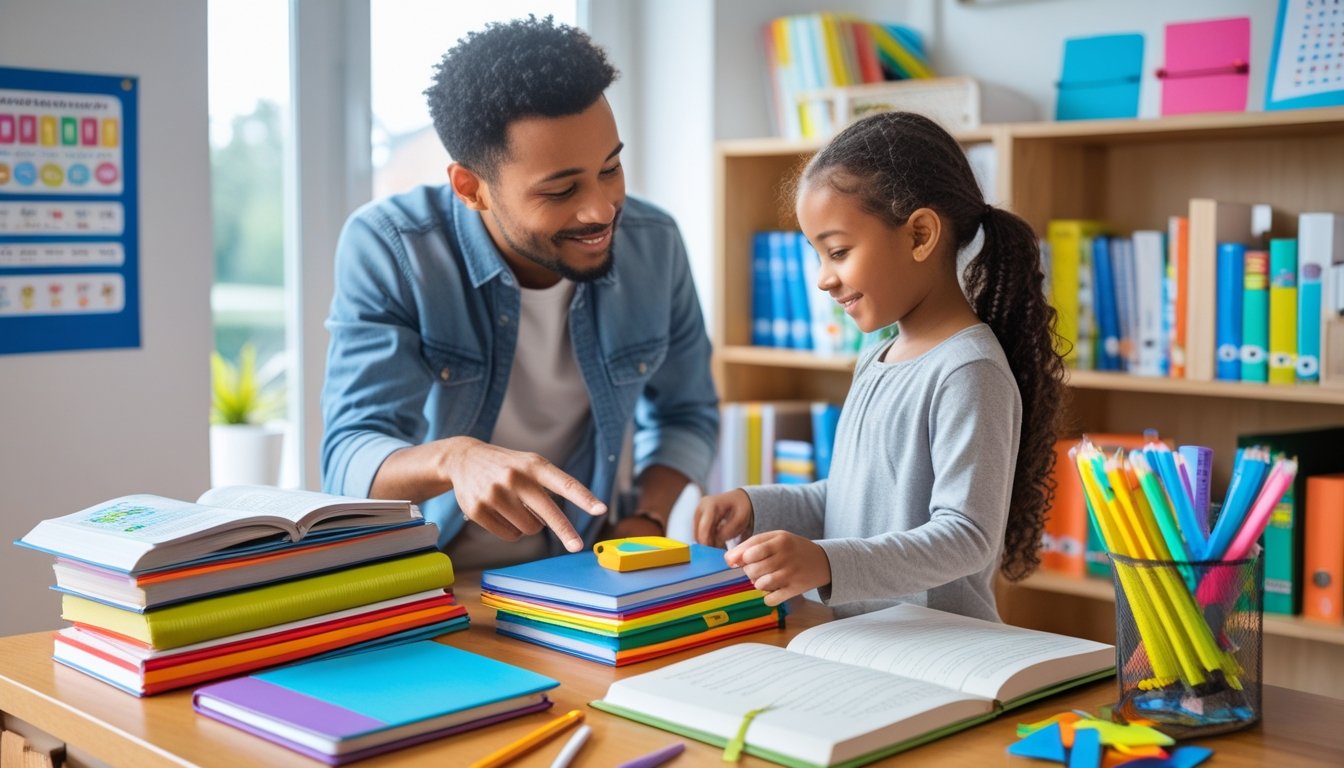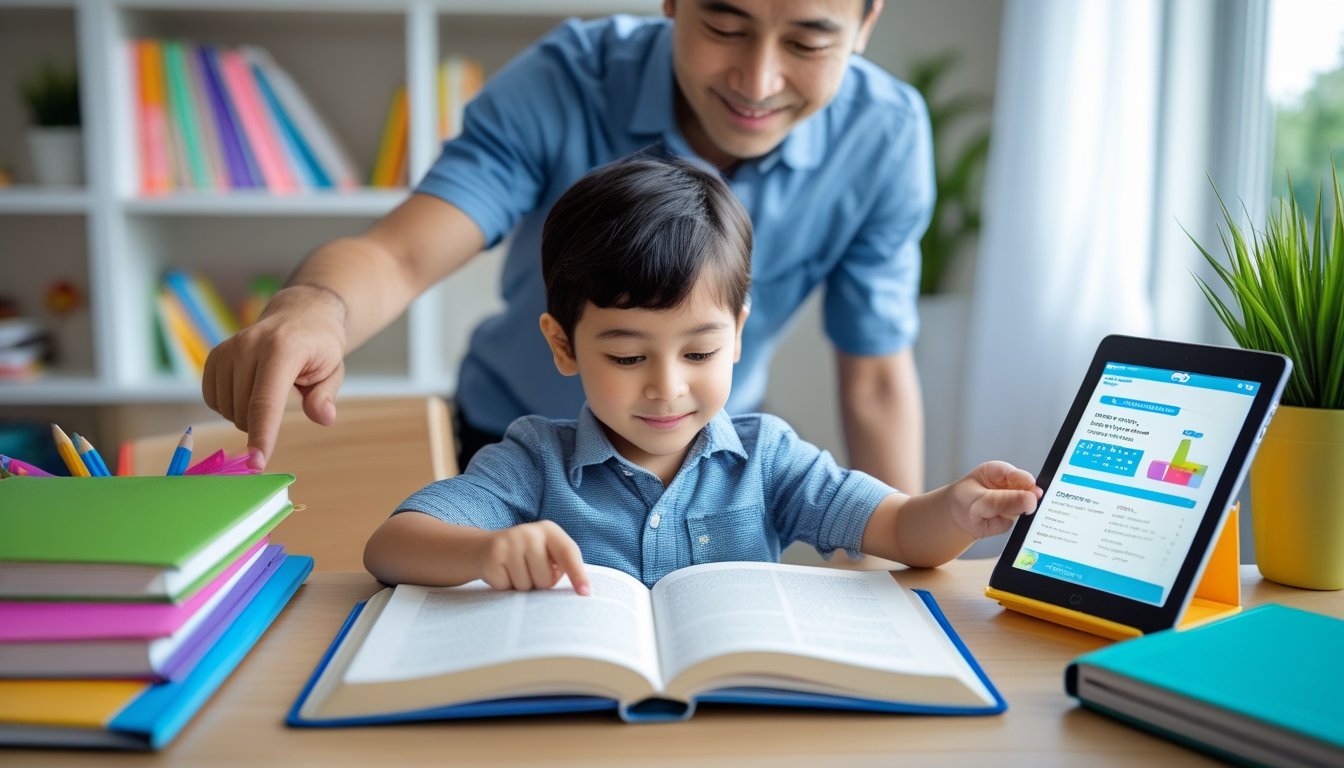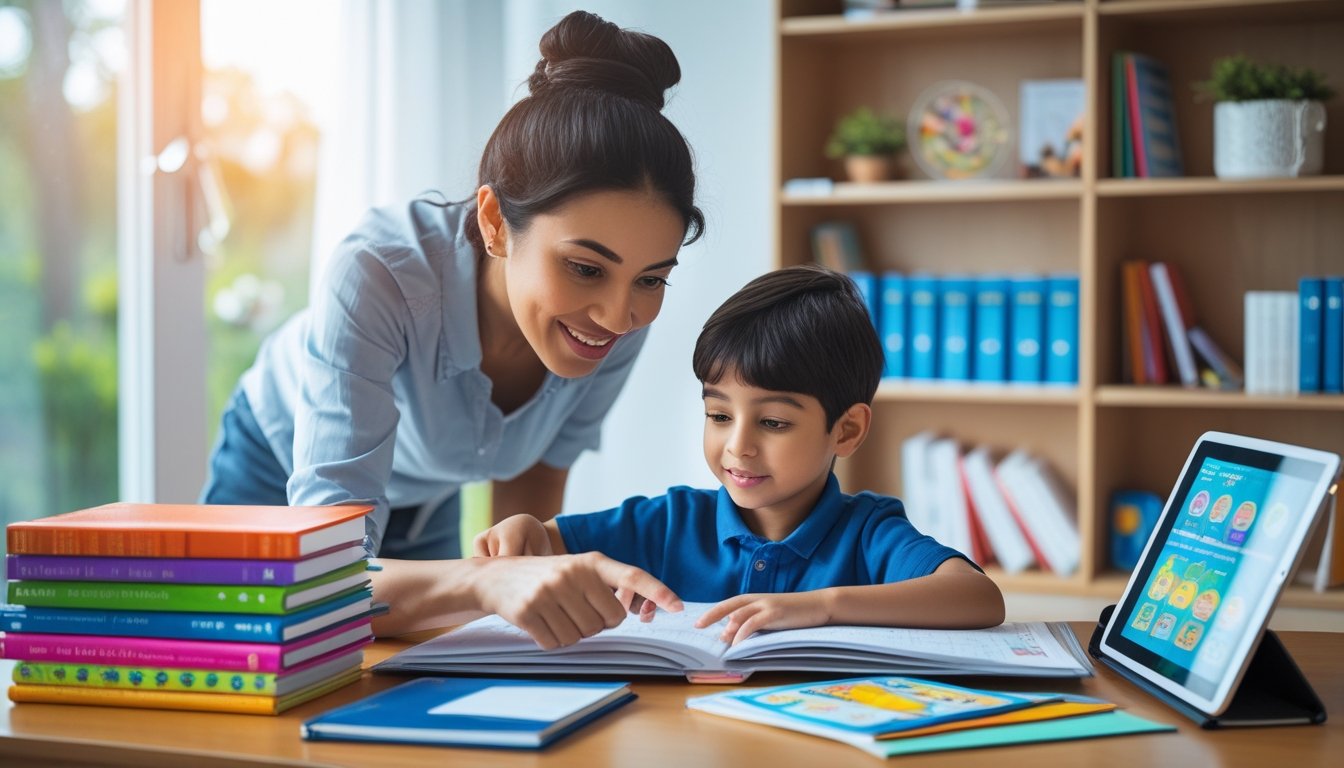Late updated: 26 Oct 2025 14:10
Written by:
How To Select The Right Study Materials For Your Child: A Comprehensive Guide
Selecting study materials for our children can feel like navigating an endless array of options. Each child learns differently, and what works for one may not suit another. Understanding a child's learning style is crucial in choosing resources that are both engaging and effective. By considering their unique needs, we can build a foundation that supports their academic journey and fosters a genuine love for learning.

We must explore various educational resources, including books, digital tools, and hands-on activities. The goal is to blend these materials to create a dynamic learning environment that caters to our child's preferences and developmental stage. This thoughtful approach can transform the often daunting task of selecting study materials into an exciting opportunity to tailor education to fit our child's individuality.
To ensure success, aligning materials with educational goals and staying attuned to our child's evolving interests is essential. This means recognising when something isn't working and being willing to make adjustments. With the right tools in hand, our children can thrive and develop the skills they need for future success.
Key Takeaways
- Knowing your child's learning style is essential.
- Mix various types of materials to suit your child's needs.
- Stay flexible and ready to adapt resources as needed.
Key Factors in Selecting Study Materials for Your Child

Selecting the right study materials for your child involves understanding their unique learning style, assessing their age and comprehension levels, and ensuring alignment with curriculum objectives. These considerations help tailor resources that effectively support a child's academic performance.
Understanding Individual Learning Styles
Each child learns differently, so recognising individual learning styles is essential. Some children are visual learners, others are auditory, and some prefer kinesthetic methods. We should observe our child’s natural preferences. Visual learners often benefit from diagrams and illustrations, whereas auditory learners might excel with audio resources or verbal instructions.
Kinesthetic learners, who thrive on movement and hands-on activities, benefit from interactive materials or experiments. By catering to these inclinations, we can choose materials that make study time both effective and enjoyable.
Assessing Age and Comprehension Levels
It's crucial to consider the age and comprehension abilities of the child when selecting study materials. Age-appropriate resources ensure that the content is neither too simplistic nor overwhelmingly complex. If a child is younger, they might need materials with engaging visuals and simplified language to retain interest and comprehension.
For older children, resources should match their increasing capability to analyse and process information. Ensuring materials are appropriate for the child's developmental stage can enhance their understanding and enjoyment of the subject.
Aligning With Curriculum and Learning Objectives
Study materials must align with the child’s curriculum and learning objectives. This alignment guarantees that the resources support the topics and skills outlined by their educational programme. We should review the curriculum to identify key areas of focus and select resources that address these components effectively.
Meeting curriculum standards helps ensure that study materials are compatible with classroom instruction. Furthermore, bridging gaps between home study and schoolwork can boost a child’s confidence and academic performance, ultimately supporting their educational journey.
Essential Types and Sources of Study Materials

Understanding the variety of study materials available can significantly enhance how our children absorb information. From traditional textbooks to innovative digital resources, each type can serve specific learning needs. Engaging with teachers and utilising their recommendations also provides additional insights into suitable material choices.
Exploring Textbooks, Videos, and Summaries
Textbooks have long been a staple in education, offering structured information across subjects. They provide comprehensive coverage, but pairing them with other resources can improve comprehension. Videos serve as a dynamic tool, often simplifying complex topics through visual aids.
Summaries condense key concepts into digestible formats, allowing for quick reviews and aiding memory retention. By incorporating a mix of these materials, children benefit from varied forms of content delivery that cater to different learning styles.
Leveraging Teachers and Recommendations
Teachers are invaluable resources in identifying effective study materials. Their experience provides us with insight into which materials align well with the curriculum and cater to individual learning needs. Direct communication with teachers or reading their suggested material lists can offer clarity.
Moreover, personal recommendations from educators often include materials that have been tested and proven effective. Establishing a good relationship with our child’s teachers ensures we stay informed about the most beneficial resources.
Balancing Study Groups, Lectures, and Independent Study
Study groups foster collaborative learning, helping children share ideas and deepen their understanding through discussion. This method promotes critical thinking and can make studying a more engaging and social experience.
Lectures deliver structured content from subject experts. They offer a framework for learning and are often pivotal in grasping foundational concepts. Independent study, on the other hand, encourages self-discipline and caters to individual pacing.
Balancing these methods gives children opportunities to reinforce learning through various channels, fostering both academic growth and personal development. Through careful selection and use of these study materials, we can better support our children’s educational journeys.
Frequently Asked Questions

When selecting study materials for our children, it's essential to focus on criteria like difficulty level, credibility, and suitability to individual learning styles. We must also stay updated with the latest educational resources.
What criteria should be considered when choosing educational resources for children?
Our primary concern must be alignment with educational standards and our child's specific learning needs. Subjects should be age-appropriate and engaging. High-quality materials can stimulate curiosity and enthusiasm for learning.
How can I assess the difficulty level of study materials to suit my child’s learning stage?
Difficulty can be gauged by reviewing content complexity and checking it against curricular standards. Additionally, trials or sample questions can help us determine if materials meet our child’s capabilities.
In what ways can I determine the credibility and quality of educational content?
We should look for content supported by reputable educational institutions or endorsed by experts. Reviews and recommendations from other parents or educators can provide insight into the material's reliability.
What strategies can I employ to compare various educational tools and resources?
An effective approach involves creating comparison charts that highlight key features. We should consider compatibility with our child's learning style and cross-reference user feedback. This helps us identify the most suitable options.
How should the learning style and preferences of my child influence the selection of study materials?
Recognising whether our child is visual, auditory, or kinaesthetic influences our material choice. Visual learners might benefit from diagrams, while auditory learners may prefer audio content. Tailoring resources supports effective learning.
What are the most effective methods to stay updated with the latest and most beneficial educational resources?
We can subscribe to educational newsletters or forums focused on resources for children. Attending workshops and joining parental groups on social media can also keep us well-informed about new and effective materials.
